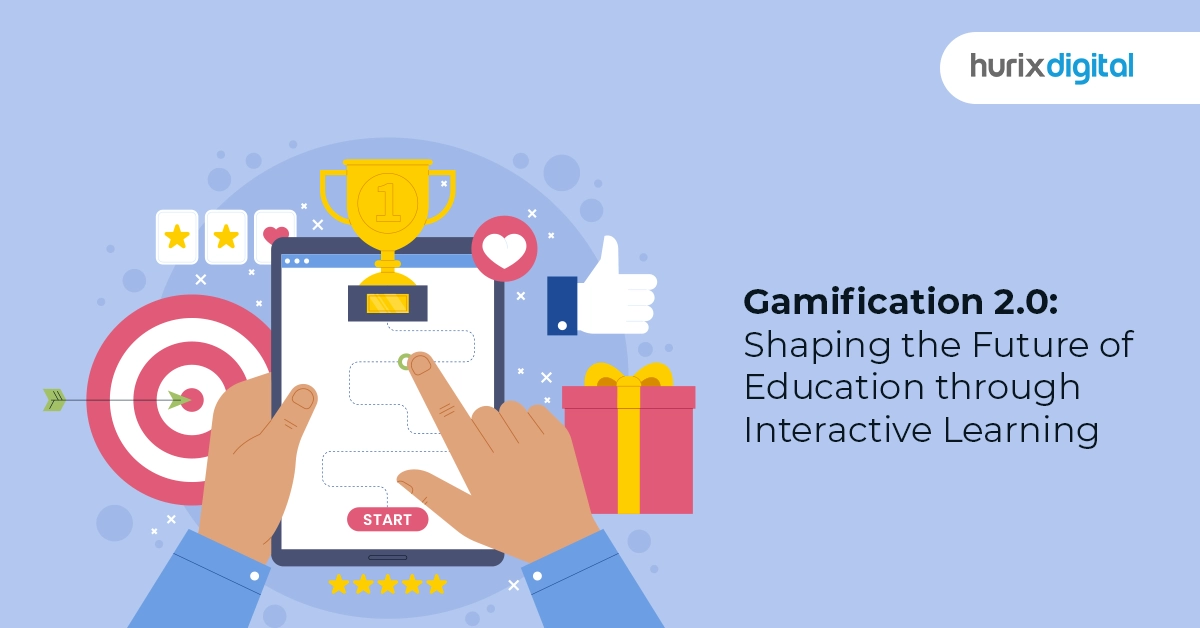
Gamification: 5 Effective Ways to Gamify Learning in Higher Education
Estimated to reach a global market value of $11.94 billion by 2021, gamification has become an increasingly ubiquitous part of education over the last few years. Yet, unlike K-12 educators, efforts to gamify higher education remain limited. Game-based learning as a teaching strategy is still used sparingly in universities and is often dismissed as just another buzzword.
In this blog post, we’re going to discuss how the mechanics and elements of games can actually improve learning and how to gamify learning in higher education institutions.
Table of Contents:
- The Concept of Gamification
- The Impact of Gamification in Higher Education
- Different Ways That Higher Education Institutions Can Gamify Learning in Classrooms
- To Conclude
The Concept of Gamification
Gamification is a strategy that uses various activities and rewards to promote student engagement. Deep-rooted in the motivational framework of experiential learning, gamification is a contemporary educational approach that systematically leverages the various elements and characteristics of gaming culture.
When used as a technique to inculcate a love of learning, it helps students become active and motivated learners.
Some of the examples of gamification include:
- Playing educational games to learn various academic skills
- Earning virtual points for completing assigned tasks
- Competing with peers towards a specific goal
Also Read: Everything You Must Know Before Selecting Gamification Services
The Impact of Gamification in Higher Education
Here are some of the ways in which gamification positively impacts learning in classrooms:
1. Increased Learner Motivation: There are a number of motivational techniques used in gamification, such as challenges and rewards that help students to remain motivated in the process of learning.
2. Better Student Engagement: Game-based learning approaches make the content more fun and interesting for students who need to learn important concepts.
3. Enriches the Overall Experience: Leveraging gaming elements helps in overcoming classroom challenges in an interactive way and completely changes the traditional evaluation method using a reward system.
4. Increased Attention Span: Gamifying learning concepts in an interesting way (earning a badge, giving feedback) makes students pay much more attention to what is being taught to them.
Also Read: How to Setup Effective Game-Based Learning for Enterprises
Different Ways That Higher Education Institutions Can Gamify Learning in Classrooms
Mastering gamification techniques requires a lot of detailed planning and restructuring of existing teaching methods by educators. The strategy can only be successful if it is integrated into the curriculum holistically. Here are some of the ways in which higher education institutions can successfully use gamification in their classrooms:
1. Implement Gamification in Grading
We can’t possibly deny the fact that the traditional grading method is key to evaluation and the overall learning experience. But, by tweaking the approach of evaluating assignments and score accumulation, educators can bring a real difference in the learning outcomes.
The idea here is to gamify the course by replacing the grades with a more engaging ‘experience points system’ where students’ grades can be determined by the number of points accumulated by them at the end of the course. This way, students can progress towards different levels of mastery (similar to games) with every single assignment/test that feels rewarding to them.
2. Point-Based Rewards System
Incentivization is an extremely powerful motivator for children and adults alike. Similar to video games, earning points motivates students and helps them feel rewarded for their efforts. Based on your classroom activities, you can create a point-based reward system, offering points on multiple aspects such as on-time completion of tasks, classroom participation, or anything else you would like. The points system you use should fit the classroom style and help your students track their progress.
The point-based system can even be used to supplement your grading. For example, if students earn a certain amount of points, you can either boost their final grade or drop their lowest grade. Apart from motivating students to participate, it also helps them feel rewarded for their efforts and allows them to enjoy class time more.
3. Promoting Quests
One of the smart ways educators can gamify learning in their classrooms is by turning each week of the semester schedule into a kind of quest where students get the chance to earn badges for both completion and mastery. The strategy here should be to reward student accomplishments with appropriate badges instead of grades to represent their achievements as more than just academic.
For example, a learner group in any specific class can earn a badge by successfully conducting a presentation or facilitating a chapter recap.
4. Create Competition Within the Classroom
Being creative and responding to student interests goes a long way in successfully gamifying a classroom. Make sure that as learning progresses, students are collecting points, leveling up, and competing against each other to build positive class culture while pushing student achievement. This is particularly useful for introducing procedures and behavioral expectations in the classroom.
5. Encourage Teamwork
Gamification of your classroom should be done in a way that boosts classroom morale and allows your students to play in teams. Getting students to learn, play, and participate together cultivates a great learning atmosphere and inculcates the value of working together.
As they work in their teams, you can allow students to share rewards, points, or even power-ups. Students will definitely want to work harder to help their team and make their teammates win. This gets much more interesting and energetic when they can share the points/rewards and cheer their teammates on.
To Conclude
The impact of gamification in improving the learning process is undeniable. Games have several elements that make them powerful tools for human learning. They are usually structured for participants to solve a specific problem – an essential skill needed for students.
Successful gamification in education involves introducing mechanics and elements of games strategically into lesson planning that can help guide the structure of the classroom. If implemented intelligently, gamification has the ability to help higher education students to develop the skills that they require, stay interested and engaged in their courses, and succeed in their long-term goals.
As gamification techniques will continue to find a place in classrooms at higher education institutions, the future will see educators explore various new strategies and pioneer innovative ways to motivate and engage their learners.

Senior Vice President
A Business Development professional with >20 years of experience with strong capability to sell new solutions and develop new markets from scratch. New Market Entry Specialist with experience working in the largest emerging markets. Exceptional experience in conceptualizing, ideating and selling new learning technologies like VR AR, etc. across multiple industry verticals.






